 W
WA lighthouse is a tower, building, or another type of structure designed to emit light from a system of lamps and lenses and to serve as a navigational aid for maritime pilots at sea or on inland waterways.
 W
WAn airway beacon (US) or aerial lighthouse was a rotating light assembly mounted atop a tower. These were once used extensively in the United States for visual navigation by airplane pilots along a specified airway corridor. In Europe, they were used to guide aircraft with lighted beacons at night.
 W
WThe conservation and restoration of lighthouses is when lighthouse structures are preserved through detailed examination, cleaning, and in-kind replacement of materials. Given the wide variety of materials used to construct lighthouses, a variety of techniques and considerations are required. Lighthouses alert seagoers of rocky shores nearby and provide landmark navigation. They also act as a physical representation to maritime history and advancement. These historic buildings are prone to deterioration due to their location on rocky outcrops of land near the water, as well as severe weather events, and the continued rise of sea levels. Given these conditions preservation and conservation efforts have increased.
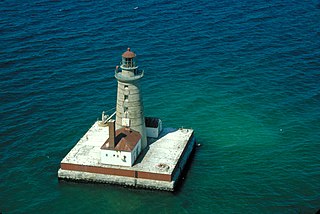 W
WA Crib lighthouse is a type of lighthouse whose structure rests on a concrete or masonry foundation supported with wooden beams. The name "crib" refers to the wooden crib pier style of construction which was used as a foundation for lighthouses. When it came time to build, wooden cribs were constructed onshore then towed to the site where they were filled with stone so they sank in place. The crib was then leveled and capped with concrete or masonry on which the lighthouse structure was constructed. Crib lighthouses were built extensively in the Great Lakes region, as the hardrock bottoms of these water bodies provided ideal foundations. Problems arose however if the crib settled unevenly into the earth as was the case with the Detroit River Light.
 W
WAugustin-Jean Fresnel was a French civil engineer and physicist whose research in optics led to the almost unanimous acceptance of the wave theory of light, excluding any remnant of Newton's corpuscular theory, from the late 1830s until the end of the 19th century. He is perhaps better known for inventing the catadioptric (reflective/refractive) Fresnel lens and for pioneering the use of "stepped" lenses to extend the visibility of lighthouses, saving countless lives at sea. The simpler dioptric stepped lens, first proposed by Count Buffon and independently reinvented by Fresnel, is used in screen magnifiers and in condenser lenses for overhead projectors.
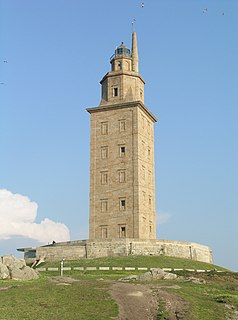 W
WThe history of lighthouses refers to the development of the use of towers, buildings, or other types of structure, as an aid to navigation for maritime pilots at sea or on inland waterways.
 W
WAn integral lighthouse is a lighthouse in which the tower and keeper's dwelling are united in one structure. Generally, the term is not used to refer to a caisson or screw-pile lighthouse.
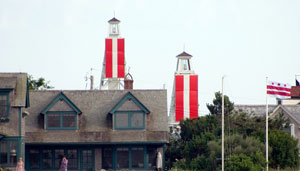 W
WLeading lights are a pair of light beacons, used in navigation to indicate a safe passage for vessels entering a shallow or dangerous channel; and may also be used for position fixing. At night, the lights are a form of leading line that can be used for safe navigation. The beacons consist of two lights that are separated in distance and elevation, so that when they are aligned, with one above the other, they provide a bearing. Range lights are often illuminated day and night.
 W
WThe lighthouse and naval vessel urban legend describes an encounter between a large naval ship and what at first appears to be another vessel, with which the ship is on a collision course. The naval vessel, usually identified as of the United States Navy or Royal Navy and generally described as a battleship or aircraft carrier, requests that the other ship change course. The other party responds that the naval vessel should change course, whereupon the captain of the naval vessel reiterates the demand, identifying himself and the ship he commands and sometimes making threats. This elicits a response worded as "I'm a lighthouse. Your call", a punchline which has become shorthand for the entire anecdote.
 W
WA lighthouse museum is a museum specializing in the display of historical objects relating to lighthouses. These museums are either stand alone buildings or are present in lighthouses that are active or inactive. Objects displayed include tools lighthouse keepers used at the time in their everyday lives to maintain the light as well as historic objects such as the Fresnel lens. In addition to navigation, lighthouses in general continue to operate almost as "small maritime museums".
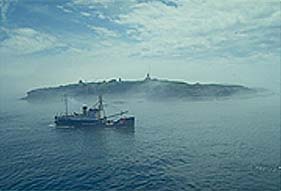 W
WA lighthouse tender is a ship specifically designed to maintain, support, or tend to lighthouses or lightvessels, providing supplies, fuel, mail, and transportation.
 W
WA pile lighthouse is a type of lighthouse found in Australia and the United States. In the United States they are found primarily in Florida, including on open reefs adjacent to the Florida Keys.
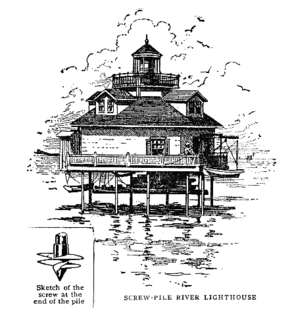 W
WA screw-pile lighthouse is a lighthouse which stands on piles that are screwed into sandy or muddy sea or river bottoms. The first screw-pile lighthouse to begin construction was built by the blind Irish engineer Alexander Mitchell. Construction began in 1838 at the mouth of the Thames and was known as the Maplin Sands lighthouse, and first lit in 1841. However, though its construction began later, the Wyre Light in Fleetwood, Lancashire, was the first to be lit.
 W
WA sector light is a man-made pilotage and position fixing aid that consists of strictly delineated horizontal angle light beams to guide water-borne traffic through a safe channel at night in reasonable visibility. Sector lights are most often used for safe passage through shallow or dangerous waters. This may be when leaving or entering harbour. Nautical charts give all the required information.
 W
WSkeletal frame light towers are lighthouse towers that have only an open frame. They are commonly built as aids to navigation; most of them are not considered to be lighthouses. However, during the late nineteenth century and the first years of the twentieth, larger skeletal towers were installed at various light stations throughout the United States. These lights were originally tended by lighthouse keepers, so they were and are listed as lighthouses.
 W
WTotal internal reflection (TIR) is the optical phenomenon in which the surface of the water in a fish-tank, viewed from below the water level, reflects the underwater scene like a mirror with no loss of brightness (Fig. 1). In general, TIR occurs when waves in one medium strike sufficiently obliquely against the boundary with a second ("external") medium, in which the waves travel faster than in the first ("internal") medium; the second medium must also be perfectly transparent to the waves. TIR occurs not only with electromagnetic waves such as light and microwaves, but also with other types of waves, including sound and water waves. In the case of a narrow train of waves, such as a laser beam (Fig. 2), we tend to describe the reflection in terms of "rays" rather than waves; in a medium whose properties are independent of direction, such as air, water, or glass, the "rays" are perpendicular to the associated wavefronts.
 W
WVada Shoal Lighthouse is an active lighthouse, located circa 4 nautical miles offshore Vada on the Ligurian Sea, in order to signalling the presence of the shoals.